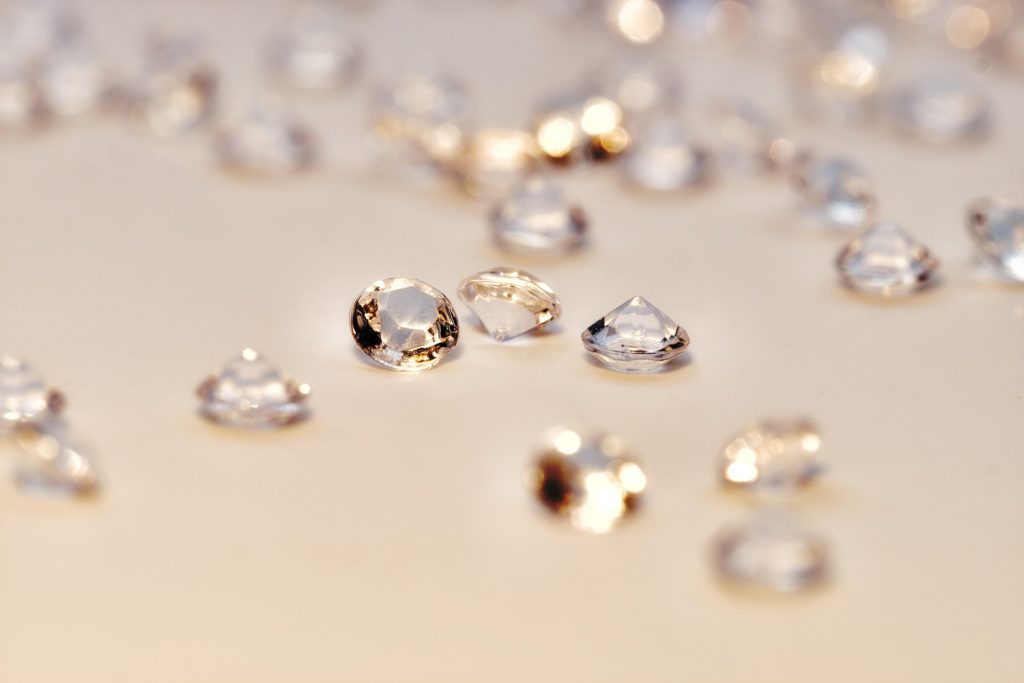Formed billions of years ago from the pits of the earth, so few diamonds have survived to reach the surface, and not all of them have the quality to pass the diamond market standard. Diamonds are not only valued for their sparkle and clarity. They are also durable – in fact, the hardest matter known to man – and because they are invulnerable to deterioration, they can last a long time, making an ideal material for heirlooms. Their clarity is also among the qualities that make this stone so precious.

When a diamond is given as a gift, it means that the recipient means a lot to the giver. If you are planning on buying a diamond engagement ring for your partner, you should at least have a basic understanding of how precious stones are graded. The 4 Cs, which are, Cut, Clarity, Colour and Carat are universally used to grade diamonds, and with that in mind, here are a few tips when looking for clarity in a diamond.
Clarity
A flawless diamond has no inclusions, whereas a diamond that has inclusions will appear slightly duller, and the clarity does affect the shine of the stone. If you are looking for that perfect ring, The Diamond Jewellery Studio has a selection of pink diamond engagement rings, along with an extensive catalogue of stunning diamond rings to suit every budget. Of course, you will need to know her taste in jewellery, as well as her ring size, but once you have those, online browsing will give you a virtually limitless number of quality diamond rings to view.
Two Types of Flaws
There are two types of imperfections with diamonds, namely: blemishes, which affect the diamond’s surface, such as cracks or chips, while the other imperfection is called an inclusion, and is an internal flaw. Both of these flaws have a direct impact on a stone’s value, yet slight flaws are not really visible to the naked eye, and for many people, that is the preferred type of stone, due to the lower cost.
Flawed Diamonds That Can’t Be Seen With The Naked Eye Image Source: Pixabay
Image Source: Pixabay
If you placed a flawless diamond next to one with inclusions, you would not be able to tell the difference simply by looking at them, so rather than spending a lot of money on a flawless stone, consider one with a few inclusions, which will cost much less and still have that sparkle that diamonds are known for. You can find informative articles online if you want to know about the clarity grading system, which every potential buyer should read.
Diamond Clarity Chart
At the top end of the scale, a flawless diamond is graded as FL, while at the other end of the scale, a badly blemished stone is classed as I3. Diamonds that are graded as VS2 have inclusions or blemishes that are not visible to the naked eye, and are a popular choice for diamond engagement rings. If you are soon to pop the question to your partner, search online for an established jeweller, who would have an extensive catalogue of top-quality diamond engagement rings to suit every budget.
How Is Clarity Grading Carried Out? Image Source: Pixabay
Image Source: Pixabay
A qualified gemologist examines the diamond using a 10x powered microscope, and grades the stone according to his findings. The gradings are as follows:
* FL – No inclusions or blemishes
* IF – No Internal flaws, with minute surface blemishes
* VVS1 & VVS2 – Very, very slight inclusions
* VS1 & VS2 – Very slight inclusions
* SI1 & SI2 – Slight inclusions and blemishes that are visible to the naked eye
* I1 & 12 – Obvious inclusions that are noticeable to the naked eye
Once you have familiarised yourself with the 4Cs of diamond grading, you can begin to browse online jewellers in search of the perfect engagement ring with some confidence.
First Image Source: Pixabay





Follow!